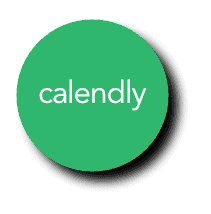Spending quality time planning for the future is something that just about everyone should do, but which very few actually do in sufficient quantity and detail.
There are so many reasons why this is the case, like the fact that:
- we are very busy putting out today’s fires;
- we kind of think we know where we are going, and we figure that everything will kind of work out anyway;
- we really aren’t sure how or where to begin.
In most cases, it is some combination of all of these elements, and even a few others.
To their credit, many advisors who specialize in helping people with long term planning have developed various approaches and processes to help engage clients in these important tasks.
Coming at this as I do, from a holistic family point of view, where I specialize in helping business families and families of wealth with their long term “Continuity Planning”, the process can get a bit hairy. Let me explain.
There are a lot of moving parts in a family, where each person is important and has their own views, priorities, and desires. There are lots of stakeholders, if you will.
Add in things like different generations, gender differences, in-laws, those working in the business versus those not, and you can start to see how complexity rears its ugly head.
Now let’s look at some of the subjects that need to be addressed:
- Who will manage the business in the future?
- Who will “lead” the business, how will decisions be made?
- How do we get from today’s realities to the best set-up in the future?
- Just when will the leading generation cede control to the rising generation?
- Who will own how much?
- What are the legal, accounting, tax, and insurance questions that we need to address as part of this planning?
Most of the answers to these last questions are found with the help of specialists in the various domains. The advice industry, however, is still very much based on a “silo” approach, and while everyone says that they “collaborate” with professionals in other disciplines, they do so with varying degrees of ability and success.
OK, so I am sure that some of you are saying, “Yeah, yeah, I know that, but what about your “dreaming” and “planning” stuff that you teased us with in your headline?” Here goes.
I have been developing a process to address these issues for families, and in so doing I came to an “A-Ha!” moment of sorts a couple of weeks ago, based on the planning and dreaming points of view, and which I am convinced will be the heart of its success. Here goes:
- You do NOT plan your dreams, but you MUST discover them so that you can then plan on achieving them.
- When the dream is for a family, and not just an individual, communication is vital for the co-creation of the dreams.
- Just as you do not plan the dream, you do not dream up a plan either, you must develop the plan, which then helps you arrive at your dream.
The tool, or process, that I am currently putting the finishing touches on, is based on a “Business Model Canvas” that I found on my wife’s desk at home. It is a tool that she uses in her job coaching social entrepreneurs.
Rather than calling mine a Canvas, I have entitled my tool a Blueprint, as in “a photographic print that shows how something will be made” and “a detailed plan of how to do something” (a couple of definitions I found via Google).
The Blueprint looks at the three circles important to Business families: Family, Business, and Ownership.
We look at where they are now, the dream of what they could look like in the distant future, and the plan for the transition to get them there.
It may look simple, but it is actually quite a detailed process to help families discover their dreams, and work together to develop the plans to achieve them.

